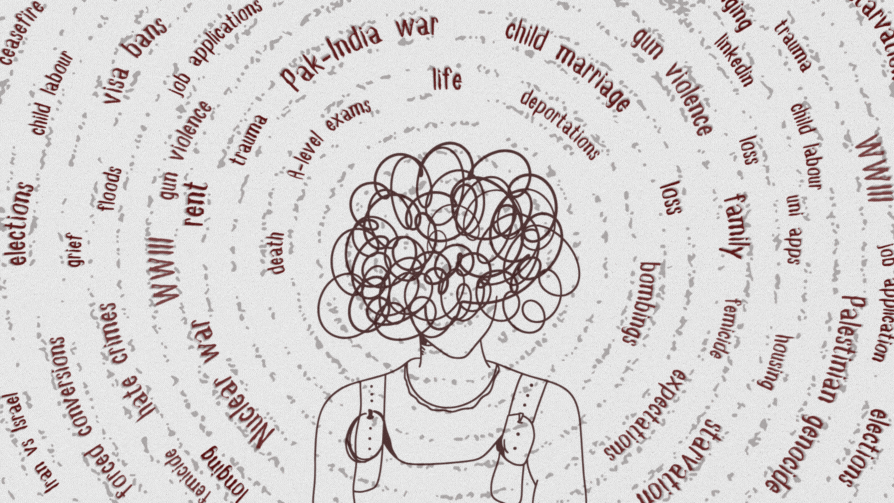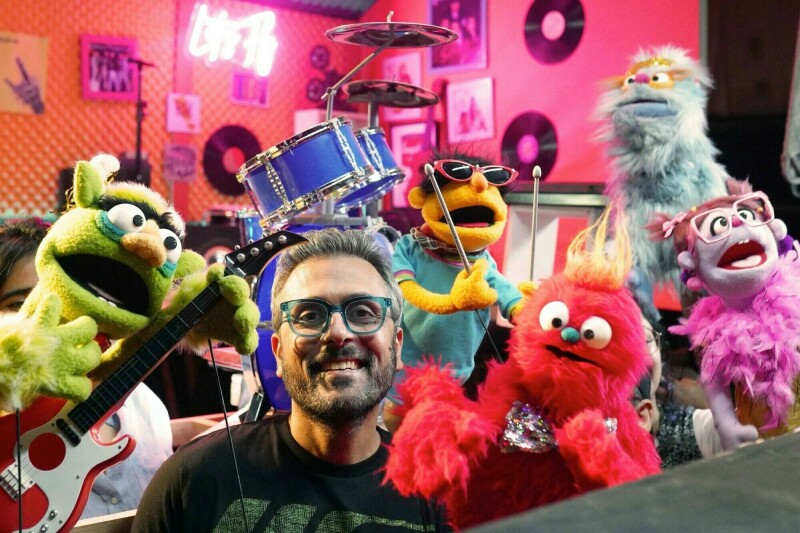Bringing Pakistan and India together, one taxi seat cover at a time
The back of a taxi cab is like your shower cubicle; it's where you daydream about what your wedding will look like, where you indulge in some deep-thinking and self-reflection, where you plan out the rest of your day. You can even sing there! Undoubtedly, it's a sacred place and one man is on a mission to decorate your sanctuary.
 |
| 'City as Objects' by designer, Sameer Kulavoor |
The initiative Taxi Fabric was the product of a Eureka moment that took its own sweet time to strike.
"It's a blind spot, isn't it? Taxi seat covers, I mean. When I was working in Mumbai, taxis were my primary mode of transport and it's really a misconception that these drivers don't care what their vehicles look like. Like occasionally, they revamp the taxis from outside by putting on stickers and stuff like that but it dawned on me that no one was paying attention to the interior," shares founder Sanket Avlani.
 |
| Pranita Kocharekar’s design, 'You & I' featured in an iconic black and yellow Mumbai cab —Photo courtesy: Taxi Fabric's official website |
He adds it wasn't smooth sailing right off the bat.
"The idea developed as I brainstormed what to do to make the seat covers more enticing with a few artistic friends. When we went into production initially, we got a bit of a reality check."
"To have an idea in your head and to execute it are two very vastly different things. From there started our long journey into making Taxi Fabric a practical reality — we spoke to a lot of taxi drivers, examined the taxis. It took us a couple of years to solidify our purpose but here we are now, on our tenth taxi."
As the labour of love is being funded by their Kickstarter campaign which raised over a whopping $17,000, the Taxi Fabric team is aiming to give a face-lift to around 50 taxi cabs in a year moving forward.
Samya Arif: The Pakistani designer making waves in an Indian taxi — literally!
To memorialize Pakistan's Independence Day, the team of designers partnered up with graphic designer Samya Arif of Karachi and unveiled their collaboration aptly on 14 August.
 |
| Monad celebrates our neighbour India and encourages peace amongst the two nations —Photo courtesy: Taxi Fabric's official website |
The centerpiece of her design titled 'Monad'? Similarities between Pakistan and India, two nations with a history riddled with conflict.
Arif says India and Pakistan were "separated at birth, siblings who grew up and forgot how much they love each other"
She elaborates: "I have picked up on hand gestures and geometric patterns common or unique to both cultures and religions such as a dua or namaste and amalgamated them into a visual collage around a sea scape."
 |
| “Samya beta, aap ne jo hamare liye design banaya uske liye thank you, very very much. Humara taxi bahut chamak gaya. Aapko humne dekha toh nahi hai lekin kabhi milne zaroor aana” - Satmant Singh |
Avlani, who reached out to Samya after looking at her work online, had nothing but good things to say about the Pakistani artist: "Samya's been such a trooper about the whole process. Obviously, she couldn't be there in person so it was a little tougher, we paid great attention to detail because we wanted to do her work justice."
| |
"All in all, we're really happy with the way everything turned out. It's an experience that has changed me completely; we're conditioned to believe things that are untrue but when a Pakistani and an Indian interact like this, you realize how similar we really are."
Moving canvases
Walking us through how a piece goes from design to production, the 28-year-old designer reveals it's a high intensity process.
| |
"We pick an illustrator; that is obviously the first step. We don't just focus on upcoming designers but established ones who can preferably fund their own taxi fabric are also welcomed onboard. Once that has been filtered, we talk to the artist, give them a demo of a taxi that's been done before, if possible. We also really encourage that they meet and talk to the drivers."
| |
"The production and fabric fitting process is lengthy. The cab and every panel in it has to be measured precisely so that the fabric is cut and stitched on properly. Us designers, we're fussy people so often, the smallest detail being neglected means the fabric has to be reprinted but I don't mind; their hard work deserves the time," he explains.
| |
10 makeovers down, thousands to go
Although it's still murky how the fabric is going to be maintained, Avlani, who is currently based in the United Kingdom is fully committed to expanding Taxi Fabric.
"To see a person's mastery of craft displayed on a public medium is something that inspires me beyond bounds. When you see people interact with your work and give feedback, it evokes a different spark altogether so this [Taxi Fabric] is something that really excites me."
 |
| Kunel Gaur's 'A Century of Revolt' which was displayed on 15 August, India's Independence Day — Photo courtesy: Taxi Fabric's official website |
I asked Sanket which one was his personal favourite.
"I couldn't possibly pick one they all have their own story and significance. However, I can tell you which one is my least favourite: the one I designed!" says the modest designer laughing.
 |
| 'Number Game' by Sanket Avlani showcases funky coloured *dabbas* which are lunch boxes or tiffin carriers used widely in India |









